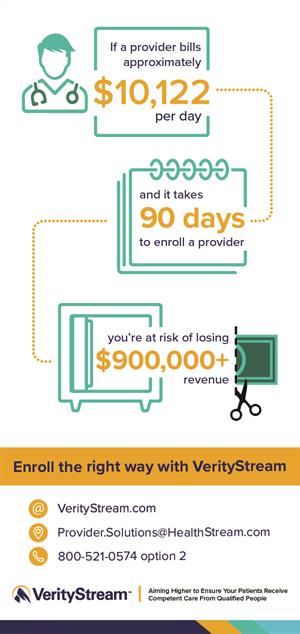
If you’re responsible for payer enrollment at a medical group practice today – we bet that your process looks something like this:
- Your medical group practice recruits a new physician.
- You onboard them and submit enrollment applications for participation with health plans.
- You wait 90 days for the health plan to credential the provider.
You’re getting the job done, but you might also be losing money. A lot of money!
If a busy provider bills approximately $10,122/day and it takes 90 days to enroll a provider, you’re at risk of losing $900,000+ in revenue. Scary right?
Over the years, the experts at VerityStream have seen a lot of scary things like:
Aging Receivables

One medical group in South Dakota revealed to us in confidence that they had $350,000 in aging receivables.
Mounds of Paper

One northeast medical group showed us a giant stack of papers covered in sticky notes (to highlight required fields) that they mailed out to onboard new providers. This process cost them a lot of time and money. And, once the paperwork was sent, they had no way to track whether the paperwork was being completed or not.
Failed Software Launch

When one of our customers decided to try another vendor, that vendor failed to keep its lofty promises. After a lengthy implementation cycle, they were unable to get this competitive solution live. We welcomed the customer back, and worked quickly to get them live, but they wound up losing quite a bit of time and money in the process.
Rejected Applications

One mid-sized medical group was submitting enrollment applications completed by hand! Key fields were often missed and data was frequently illegible. Payers regularly rejected applications, costing this organization real money, as they could not be reimbursed for providers’ services until the errors were corrected.

